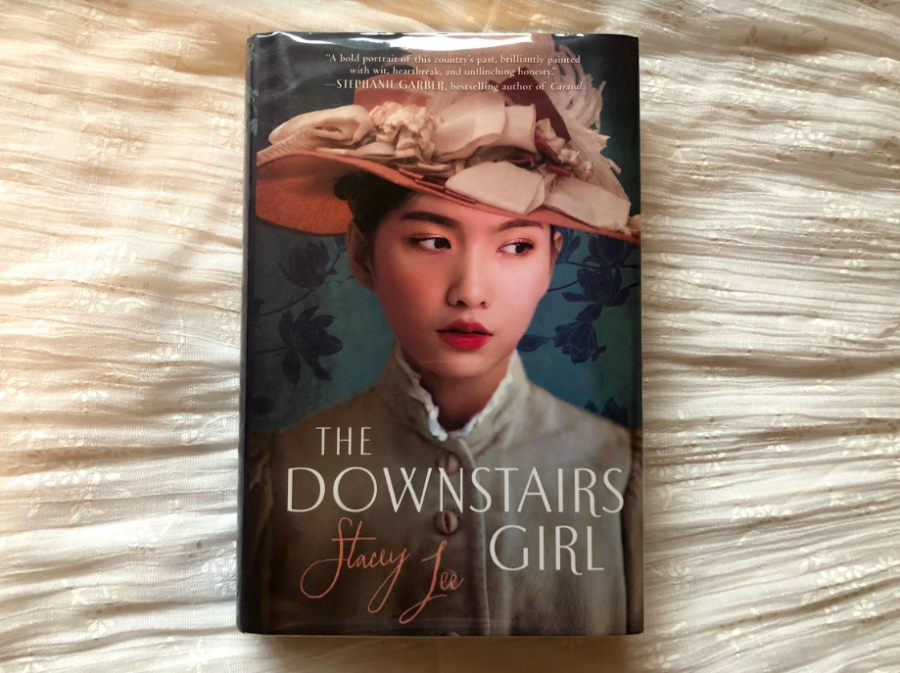Melina’s Booket List: ‘The Downstairs Girl’
“The Downstairs Girl” documents the life of Chinese-American protagonist Jo Kuan in post-Civil War Atlanta.
I never reach for Young Adult fiction on library shelves since the repetitive nature of the stories bores me. Yet, Stacey Lee’s August 2019 novel “The Downstairs Girl” was able to keep me captured and engaged with its unique storyline and relatable characters.
The story follows 17-year-old Jo Kuan in post-Civil War Atlanta. She has never known her parents and spends her days with Old Gin, her non-biological father figure. Jo and Old Gin live in the basement of the Bell Family, which produces the town’s newspaper, “The Forum.” Jo has grown up her whole life in America and learned most of her English from listening to Bell’s conversations, growing to love words and writing. At the start of the book, Jo is fired from her hat-making job and goes back into the domestic services. She must navigate the nature of her world as women and people of color begin to fight for their rights in a changed America. She takes on the alias of “Miss Sweetie” and begins to anonymously write an advice column for “The Forum,” commenting on the changing town around her.
Since Jo is a Chinese-American in the post-Civil War South, she is constantly faced with obstacles based on her race. Jo wants to write but can only do so under a fake name. She wants to marry a white boy but knows her fate lies in the hands of whoever Old Gin picks for her. Although never experiencing the racism of the South in 1890, I have dealt with a similar feeling of not fitting in anywhere.
Being torn between cultures and finding the balance between multiple heritages is familiar to me. Lee’s novel documents Jo’s experience with this challenge, but it also carries broader themes of the struggles of people of color, specifically Chinese people, in America’s past. The familiarity of the way this issue is presented opens up a conversation of the progress, or lack thereof, in the U.S. today.
Lee’s descriptive language coaxed me into enjoying a Young Adult novel after not picking one up since middle school. The first-person narration reveals so much about Jo’s world, the people in it and herself. She is presented as a bookish character and uses countless similes and metaphors to describe the people she meets. For example, one description reads, “… his eyes dark like printer’s ink, with smudges under the eyes.” Lee also creates metaphors out of Jo’s interests in hat-making and writing, as well as her heritage as a Chinese-American, to describe Jo and her world. Her unique way of explaining scenarios was engrossing.
Jo and the rest of the characters aren’t just walking thesauruses, though. Lee is still able to bring a casual tone to the speech of the protagonist and her friends. She maintains an “1890s American South” vernacular but can still appeal to today’s teen voice. Usually, the awkward and bookish main character who “isn’t like most girls” would bore me, but with the mix of Jo’s witty descriptions and her charming awkwardness, I connected to the characters more than I cringed.
My love for Young Adult and historical fiction came flooding back with “The Downstairs Girl.” I forgot how attached to the characters I can become, and with Lee’s incredible narration, I was engulfed in Jo’s life. The book carries the unparalleled YA charm of slightly unrealistic plot twists while managing to explore serious themes of racism, making for an enticing story.
If you would like to read “The Downstairs Girl,” it is a featured Teen Read Week novel at the SCHS library and available on SORA!
Link to borrow on SORA: https://soraapp.com/library/schsca/search/query-the%20downstairs%20girl/page-1/201281/3985048


